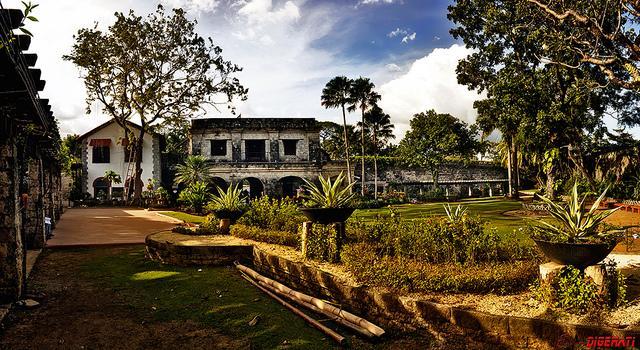
Cebu is one of the most developed provinces in the Philippines. Aside from being the main center of commerce, trade, education, and industry in the Visayas, the city is also laden with natural and historical wonders that definitely deserve a visit. Fort San Pedro is one of the historical landmarks that the province is very proud of.

Fort San Pedro and its Milestone
Little was known about the activity of the fort from the time it was built until two centuries later in 1739 when the King of Spain, Philip II desired information regarding the island of Cebu, Governor General Tanon, who was the Spanish ruler of the Islands at the time made the following reports:
Fuerza San Pedro, the fort is described as built of stone mortar with a terraplein where guns are mounted. The fort contains the necessary buildings. The largest of these buildings was the "Cuerpo de Guardia" where the personnel that manned the fort lived. Adjacent to it was the "Vivende Del Teniente" which was the living quarters of the lieutenant of the Fort. In between the aforementioned buildings is a well. At one corner attached to the walls of the bastion San Miguel (NE) was the "Alamazaros Del Rivera" (powder magazine where the fort's supply or arms and gunpowder from Manila were stored).
Located in the area now called Plaza Indepedencia, in the Pier Area of Cebu City, Fuerza de San Pedro or Fort San Pedro is a military defense structure, built by Spanish and indigenous Cebuano laborers under the command of Spanish conquistador, Miguel López de Legazpi and the Spanish Government in Cebu. The fort is the smallest and oldest triangular bastion fort in the country that was built in 1738 to repel Muslim raiders and served as a stronghold for Filipino revolutionaries near the end of the 19th century. This also served as the nucleus of the first Spanish settlement in the Philippines.
The Historical Park
Fort San Pedro today is under the care and administration of the City of Cebu as historical park. Part of the fort is a museum and houses the legacies of the Spanish Government and well preserved Spanish artifacts such as Spanish documents, paintings and sculpture. A large statue of Legazpi and Antonio Pigafetta may be seen outside the fort walls.
How to Get There
By Plane: From Manila, there is a daily flight going to Cebu City.
By Boat: Cebu City's domestic port is the country's busiest. Cebu City is home to almost 80 percent of the country's passenger vessels. The country's largest shipping lines, namely WG&A, Sulpicio Lines, Trans-Asia, George & Peter Lines and Lorenzo Shipping Lines, are headquartered in Cebu. Large passenger ferries with a capacity of 2,000 to 4,000 passengers ply the more distant routes such as Manila, Davao, Butuan City, Zamboanga, and Cagayan de Oro.
From the airport, you can ride a multicab, jeepney, or taxi. Simply ask around for which route to take. They are available 24 hr and cover most of the nooks and crannies of the city. Just be sure you know what part of the city the jeepney will take you to.
Hotels nearer to Fort San Pedro
• Barefoot White Beach Resort - White Beach, Moalboal, Cebu, Philippines 6032
• Asian Belgian Resort - 123 Saavedra Road, Moalboal, Cebu, Philippines 6032
• Stefanet's Resort - Panagsama, Moalboal, Cebu, Philippines
• Sea Turtle House - Lo-oc, Basdaku, White Beach, Moalboal, Cebu, Philippines 6032
• New Eve's Kiosk Dive Resort - Panagsama Beach, Moalboal, Cebu, Philippines
• Ancestral Inn – Negros - Larena Corner, Roxas Street, Poblacion, Guihulngan City, Siaton, Dumaguete / Negros Oriental, Philippines 6214
• Bonita Oasis Beach Resort - Bantayan 1, Basdiot, Moalboal, Cebu, Philippines
• Savedra Beach Bungalows - Panagsama Beach, Basdiot, Moalboal, Cebu, Philippines
• Marina Village Beach Resort - Panagsama Beach, Moalboal, Cebu, Philippines
• Cabana Beach Resort - Panagsama Beach, Moalboal, Cebu, Philippines










